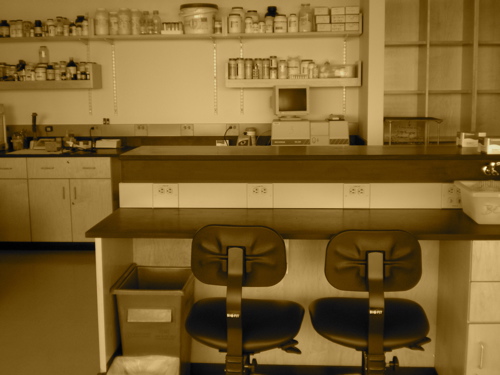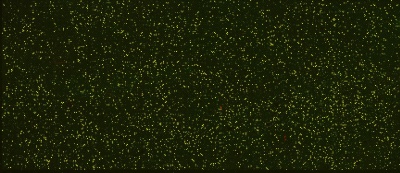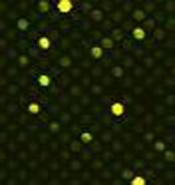Difference between revisions of "20.109(S09):Module 2"
(→Module 2) |
MAXINE JONAS (Talk | contribs) m (16 revisions: Transfer 20.109(S09) to HostGator) |
||
| (4 intermediate revisions by one user not shown) | |||
| Line 5: | Line 5: | ||
==Module 2== | ==Module 2== | ||
| − | '''Instructors:''' [http://web.mit.edu/be/people/samson.htm Leona Samson], [ | + | '''Instructors:''' [http://web.mit.edu/be/people/samson.htm Leona Samson], [http://openwetware.org/wiki/User:AgiStachowiak | Agi Stachowiak] |
| − | '''TA:''' [ | + | '''TA:''' [http://openwetware.org/wiki/User:Stephen_J._Goldfless | Steve Goldfless] |
| − | Original module developed by [ | + | '''Additional development and instruction''': Peter Svensson (Samson lab, mouse gene siRNAs) and Stuart Levine (BioMicro Center, microarray analysis). Original module developed by [http://openwetware.org/wiki/Natalie_Kuldell ] and Leona Samson. |
| − | In this experiment, we will consider | + | In this experiment, we will consider direct and indirect effects of an experimental perturbation, specifically the use of RNA interference (RNAi). Each group will test two different short interfering RNAs (siRNAs) in mouse cells. We will first compare the efficacies of six different siRNAs targeting luciferase. Knockdown of this gene is readily measured using a luminescence assay and reporter plasmid. Next we will test four different commercially available siRNAs targeting mouse genes of interest. Each siRNA should knock down the gene of interest (direct effect), but is also likely to affect other genes in pathways involving the target gene (indirect effect), and may even affect expression of genes that are unrelated to the target due to some non-specific effects of the siRNA or unintentional targeting of similar sequences (off-target effect). You will perform a genome-wide expression microarray experiment and try to assess how the changes in gene expression that you see fall into these three categories. Along the way, you will learn such valuable skills as how to culture cells, do basic statistics, and analyze large data sets. |
[[Image:20.109_Control-uArray.jpg|thumb|left|400px|'''Control Microarray''' Sample expression microarray spanning entire human genome, using identical RNA labeled with two different colours. The resulting equal red and green fluorescence intensities combine to produce yellow spots.]] | [[Image:20.109_Control-uArray.jpg|thumb|left|400px|'''Control Microarray''' Sample expression microarray spanning entire human genome, using identical RNA labeled with two different colours. The resulting equal red and green fluorescence intensities combine to produce yellow spots.]] | ||
| Line 29: | Line 29: | ||
[[20.109(S09): Microarray data analysis (Day8)| Module 2 Day 8: Microarray data analysis]]<br> | [[20.109(S09): Microarray data analysis (Day8)| Module 2 Day 8: Microarray data analysis]]<br> | ||
| − | [ | + | [http://openwetware.org/wiki/20.109(S09):_Expression_engineering_report | Expression Engineering Report]<br> |
| − | [ | + | [http://openwetware.org/wiki/20.109(S09):_Journal_club_letter | Journal Club Letter]<br> |
| − | [ | + | [http://openwetware.org/wiki/20.109(S09):_TA_notes_for_module_2 | TA notes, mod 2] |
Latest revision as of 19:33, 28 July 2015
Module 2
Instructors: Leona Samson, | Agi Stachowiak
Additional development and instruction: Peter Svensson (Samson lab, mouse gene siRNAs) and Stuart Levine (BioMicro Center, microarray analysis). Original module developed by [1] and Leona Samson.
In this experiment, we will consider direct and indirect effects of an experimental perturbation, specifically the use of RNA interference (RNAi). Each group will test two different short interfering RNAs (siRNAs) in mouse cells. We will first compare the efficacies of six different siRNAs targeting luciferase. Knockdown of this gene is readily measured using a luminescence assay and reporter plasmid. Next we will test four different commercially available siRNAs targeting mouse genes of interest. Each siRNA should knock down the gene of interest (direct effect), but is also likely to affect other genes in pathways involving the target gene (indirect effect), and may even affect expression of genes that are unrelated to the target due to some non-specific effects of the siRNA or unintentional targeting of similar sequences (off-target effect). You will perform a genome-wide expression microarray experiment and try to assess how the changes in gene expression that you see fall into these three categories. Along the way, you will learn such valuable skills as how to culture cells, do basic statistics, and analyze large data sets.
Module 2 Day 1: siRNA design and introduction to cell culture
Module 2 Day 2: Journal article discussion
Module 2 Day 3: Journal Club
Module 2 Day 4: Journal Club
Note: week off between day 4 and 5 of lab.
Module 2 Day 5: Transfection
Module 2 Day 6: Luciferase assays and RNA prep
Module 2 Day 7: cDNA synthesis and microarray
Module 2 Day 8: Microarray data analysis
| Expression Engineering Report
| Journal Club Letter


